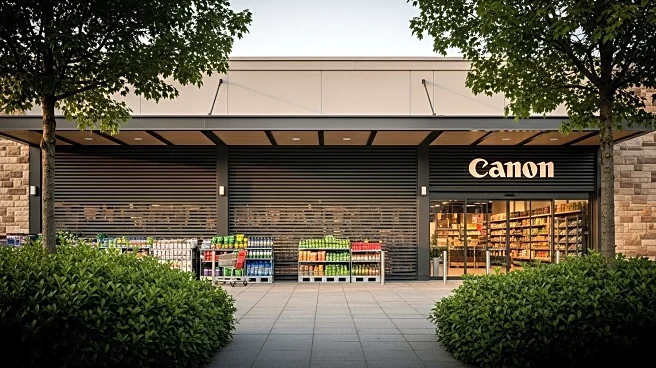What's Happening?
Orvis, a prominent outdoor retailer, has announced plans to close 31 stores and five outlet locations early next year. This decision will reduce its national footprint to 33 stores and two outlets. The company is shifting its focus towards wholesale operations, leveraging partnerships with over 550 U.S. independent retailers and several national outdoor retailers, including Bass Pro Shops, Cabela's, and Sportsman's Warehouse. This move comes as part of a broader strategy to strengthen its business model amid challenges posed by tariffs. Orvis President Simon Perkins stated that the company is rescaling its business by tightening its assortment and reducing its corporate store footprint to ensure long-term sustainability.
Why It's Important?
The store closures and strategic shift by Orvis highlight the significant impact of tariffs on retail operations. By focusing on wholesale, Orvis aims to leverage its core strengths and maintain its brand durability. This decision affects employees, customers, and the communities where these stores are located. The move also reflects broader trends in the retail industry, where companies are adapting to changing economic landscapes and consumer preferences. Orvis's focus on its heritage activities, such as fly fishing and wingshooting, underscores its commitment to its core customer base and conservation efforts.
What's Next?
Orvis plans to invest in areas where it can make the greatest impact, including world-class gear and apparel, unforgettable experiences, and conservation efforts. The company will continue to operate its direct-to-consumer website and Orvis Adventures business, which offers lodging and guide services. As Orvis enters this new chapter, it aims to lead in innovation and serve its angling and upland communities while protecting natural environments. The company's strategic decisions may influence other retailers facing similar tariff challenges.
Beyond the Headlines
Orvis's decision to close stores and focus on wholesale may have deeper implications for the retail industry. It highlights the need for companies to adapt to external economic pressures and reassess their business models. The emphasis on conservation and heritage activities may resonate with consumers who value sustainability and authenticity. This shift could also influence other retailers to prioritize their core strengths and explore new avenues for growth.










